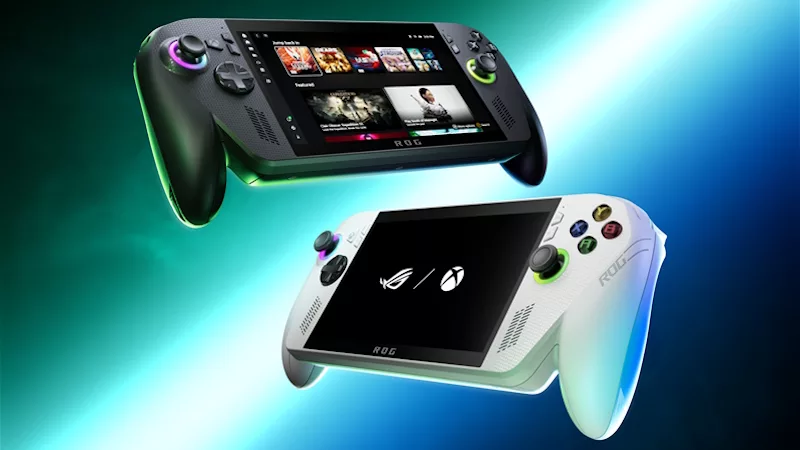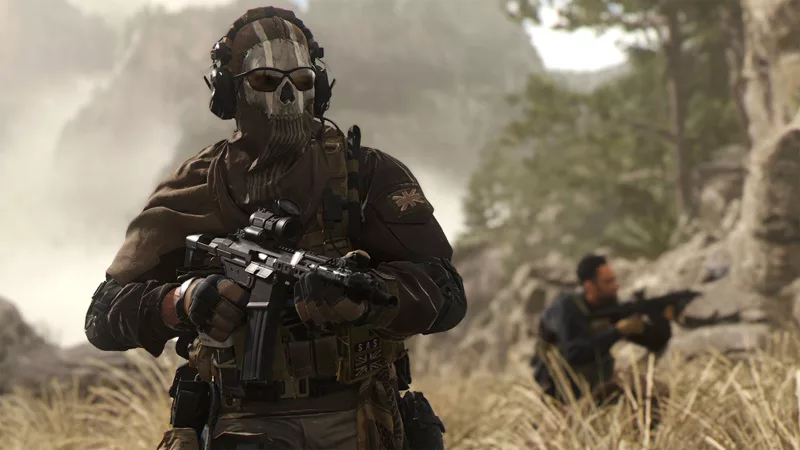Diablo IV on the ROG Ally: performance guide & best settings
Diablo IV is a perfect match for ROG Ally, so its launch couldn’t have come at a better time. If you’re ready to loot undead corpses late into the night, we’ve got the best graphics settings for portable play.
This is part of our ultimate guide to the ROG Ally series of articles. For more great games, check out our recommendations here.
What framerate to expect in Diablo IV on the ROG Ally
Diablo IV scales quite well no matter what hardware you’re playing on, making it easy to get great performance on the ROG Ally. In Turbo mode and with FSR set to Quality, the Low graphics preset should get you about 55-65 FPS in dungeons, offering a smooth experience right out of the gate. If you want to adjust your play for longer battery life, we recommend switching the Ally to Performance mode and turning FSR down to Balanced in Diablo IV’s settings, which should keep you playing around 60 FPS with only a slight decrease in fidelity. In both these scenarios motion will be smooth and tear-free, thanks to FreeSync Premium.
If you’re willing to do a bit of tinkering, however, you can make Diablo IV look even better without hampering performance too much. Turning up a few of Diablo IV’s settings can improve visual quality with almost no change in performance, while one or two settings improve visuals so much that they’re worth a small performance hit. So we’ve put together the optimized settings below, which should keep you around 50-60 FPS in dungeons with the Ally set to Turbo mode. Note that performance may dip a bit lower in town, where things are a bit busier, and your results can also vary depending on drivers, software, and other factors – like whether your Ally is plugged in.
Diablo IV optimized graphics settings for the ROG Ally
These are the settings we recommend for the best-looking experience with solid performance on the ROG Ally:
- Resolution: 1920x1080, the native resolution of the ROG Ally’s display.
- Sharpen Image and Font Scale: Set to taste. If you use FSR, like we recommend below, this sharpening won’t take effect, but if you do choose to use sharpening in another mode, we recommend turning it down fairly low to avoid sharpening artifacts. Font scaling will also be dependent on your eyes – we found the default Medium fine even on the Ally’s compact screen, but you can raise it if you want.
- FidelityFX Super Resolution 2: Quality. FSR renders the game at a lower resolution, then scales it up using intelligent algorithms to get you better performance with great image quality. For our optimized settings, we recommend Quality for best results, though you can turn it down to Balanced for even more performance at the expense of some fidelity.
- Max Foreground FPS: Set to taste. This framerate limiter can help keep motion looking smooth and consistent, though we find it isn’t usually necessary. If you want a fully uncapped framerate, crank this to the max and leave it alone.
- Texture Quality: High. This has a massive effect on the graphical detail in the game, and since it’s mostly VRAM-dependent, we can safely turn this up to High for much better looking graphics without a big hit to performance. Ultra, however, is not advised since it requires a lot of VRAM and is a minor increase in fidelity over High.
- Anisotropic Filtering: 8x. This helps make textures look sharper when viewed at an angle, giving a better-looking image without a huge performance cost. We recommend 8x for the Ally.
- Shadow Quality: Low. As the name suggests, this determines the resolution and quality of the shadows in the game. While increasing this setting usually has a marked improvement in fidelity (for a big performance cost), Diablo’s top-down view makes shadow quality less noticeable, so keeping this at Low gives a nice performance boost without hampering visual quality very much.
- Dynamic Shadows: On. Dynamic Shadows determines whether moving objects, like your character, have a shadow at all. Turning this on does bring performance down, but also makes things look much more realistic, so its one of the few settings we recommend turning up for visual quality.
- Soft Shadows: Off. This makes shadows look softer and more realistic, but we couldn’t see a very noticeable difference, so turn this off for a small boost in performance.
- Shader Quality: Low. Similarly, Shader Quality didn’t seem to affect the graphics very much in our tests, so we kept it at Low for the performance benefits.
- SSAO Quality: Low. Ambient Occlusion (or SSAO) adds lots of smal shadows in areas where objects meet, giving the world more realistic depth. In most games, this makes a huge visual difference with a large performance impact, but in Diablo IV, its effect is much more subtle, meaning we can easily lower this and gain back some performance.
- Fog Quality: Low. This determines the amount and quality of fog effects, and since it isn’t a super noticeable difference, we recommend keeping it at Low to gain back a few frames.
- Clutter Quality: Low. This controls the density of things like grass on the ground, and the distance at which they’re rendered. While you can get a performance boost from turning it off, the game looks much nicer with a bit of grass on screen, so we recommend keeping it at Low.
- Fur Quality Level: Low. Turning up the Fur Quality didn’t seem to impact visuals very much, so we left it on Low.
- Water Simulation Quality: High. This adds more detail to water, but it’s more VRAM-dependent than GPU-dependent, so you can safely go with High.
- Anti-Aliasing Quality: High. Anti-Aliasing smooths out jagged edges for a less pixelated image, and since High didn’t seem to affect performance too heavily, we turned it up for improved visual quality.
- Geometric Complexity: Medium. This determines the detail of objects as they get farther away. We recommend Medium to get a good balance between fidelity and performance.
- Terrain Geometry Detail: Low. We didn’t see a large impact to visuals turning this up, so we’ve left it at Low.
- Physics Quality: High. This improves the realism of destructible objects, and while Low looks quite good, it’s more CPU-dependent, which means you can turn it up.
- Particles Quality: Medium. Particle quality determines how many particles are spawned, like when its snowing. Medium provided a noticeable boost to particles compared to low, while still providing good performance.
- Reflection Quality: Low. We're turning off screen space reflections below, so this setting may not matter very much with our settings, but we’ve kept it at Low to keep performance up.
- Screen Space Reflections: Off. This controls the presence of certain reflections, and while it looks nice, it comes with too large a performance hit to recommend here, so we’ve turned it off.
- Distortion: On. This adds a distortion affect to fires and the like, just like you see in real life. It’s a cool effect to leave on provided you can hit your performance targets.
- Low FX: On. Turning this on lowers the quality of certain particle effects, but it’s not super noticeable on the Ally’s compact screen, and can improve performance, so we recommend turning it on.
Feel free to tinker further with these settings to find your own ideal balance. We think this is the best balance of performance and fidelity available in Diablo IV, but everyone has their own preferences – and with so many options available on the Ally, you can play your games your way.
Kirjoittaja
Popular Post

Introducing the ROG Astral GeForce RTX 5090 and 5080: a new frontier of gaming graphics

How to configure your PC's RGB lighting with Aura Sync

FSR vs RSR vs RIS: Using the ROG Ally's upscaling and sharpening features

How GPU Tweak's Power Detector+ alerts you to abnormal current on your ROG Astral graphics card

Armoury Crate 6 is here to optimize your PC gaming experience
Uusimmat Artikkelit

Introducing the ROG Xbox Ally and Ally X: ROG and Xbox team up to deliver the best in handheld gaming
We are incredibly proud to announce the ROG Xbox Ally series of handhelds, which take the ROG Ally lineup to all new heights in performance, comfort, and user experience.

Call of Duty Black Ops 6 on the ROG Ally and ROG Ally X: performance guide & best settings
Our optimized graphics settings will help you balance fidelity and framerate in the latest Call of Duty games on the ROG Ally.

God of War: Ragnarok on the ROG Ally and ROG Ally X: performance guide & best settings
Our optimized graphics settings will help you balance fidelity and framerate in God of War: Ragnarok on the ROG Ally and ROG Ally X.

Black Myth Wukong on the ROG Ally and ROG Ally X: performance guide & best settings
Our optimized graphics settings will help you balance fidelity and framerate in Black Myth Wukong on the ROG Ally and ROG Ally X.

The best games you can finish in one day on the ROG Ally and ROG Ally X
The ROG Ally and Ally X are perfect for quick gaming sessions home and away. Here are a few short gems that you can pick up, play, and complete in five hours or less.

The best Game Pass games for the ROG Ally and ROG Ally X
With three months of Game Pass included, every ROG Ally comes with an instant treasure trove of critically acclaimed games you can start playing right away.
